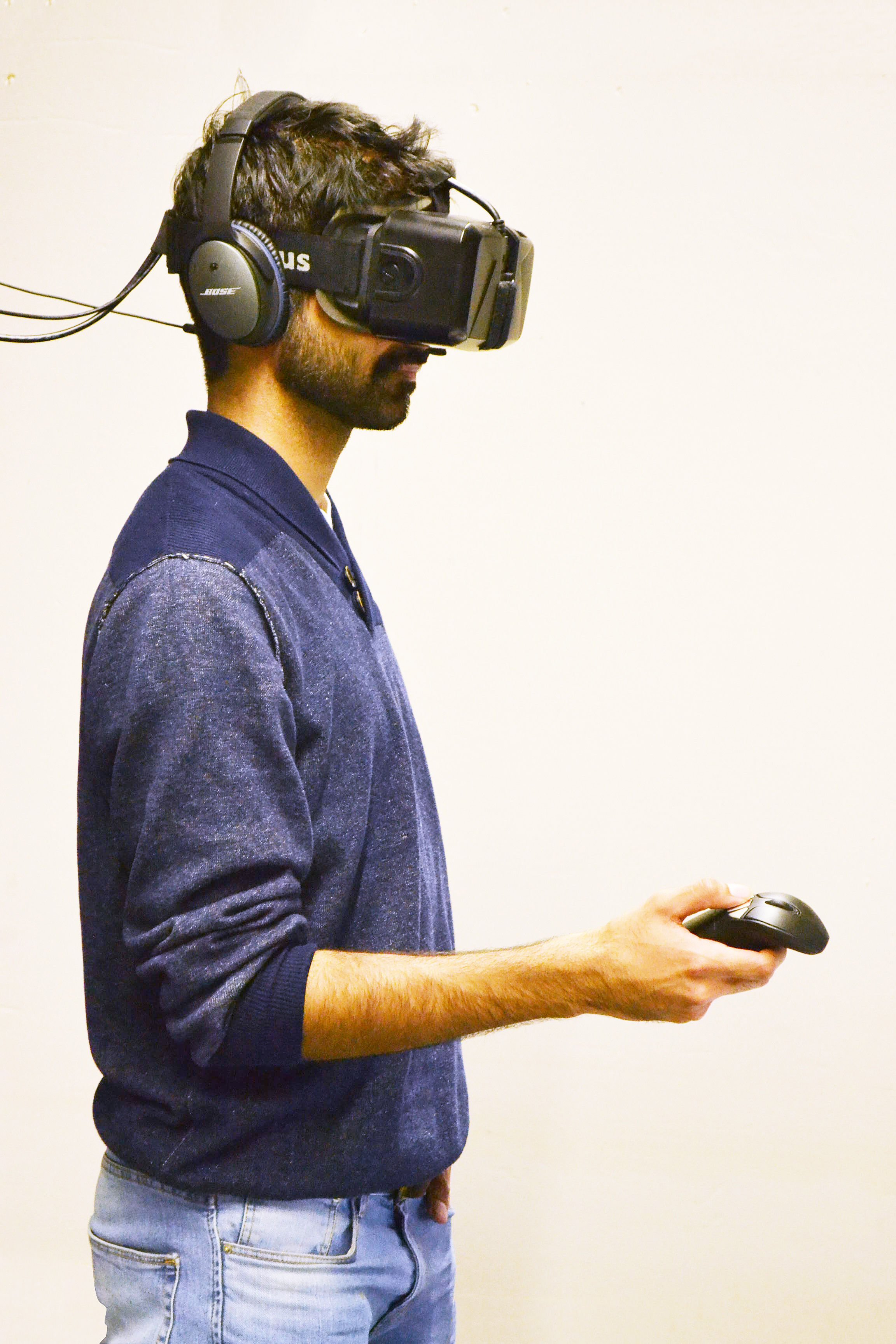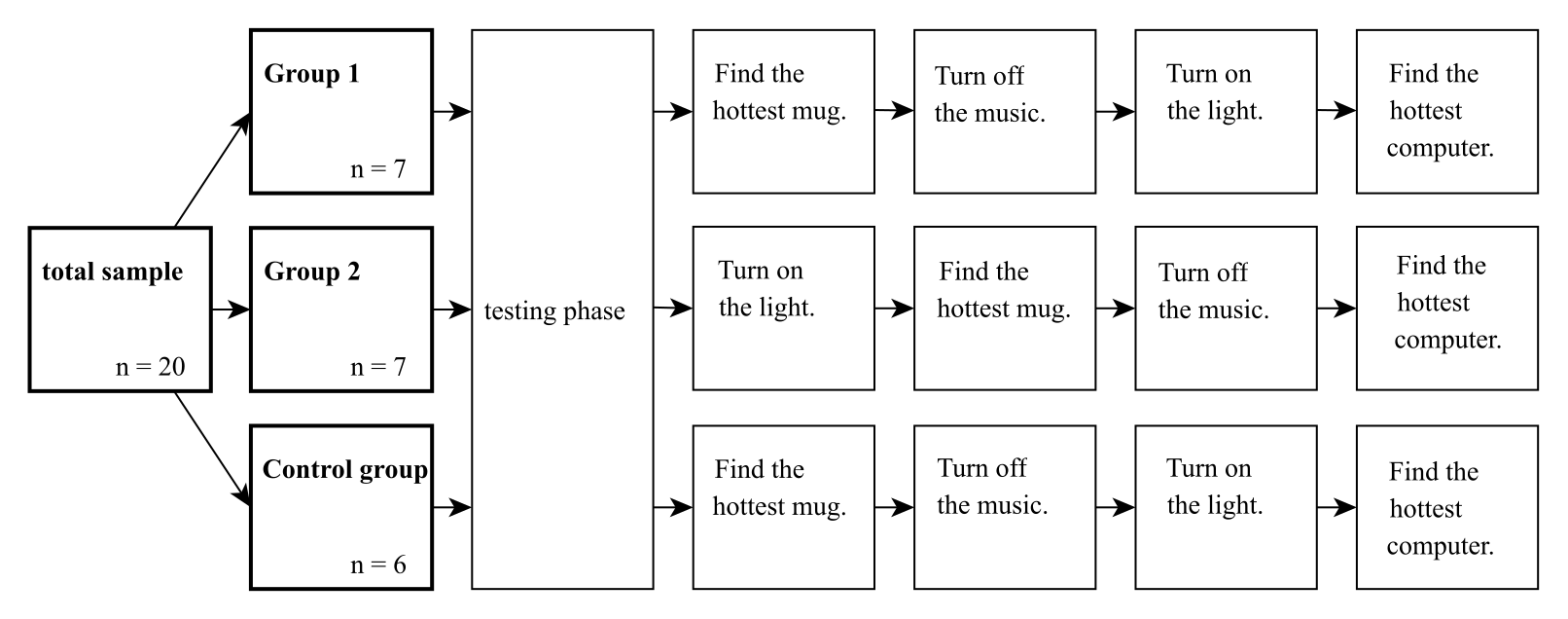Towards Augmenting Vision
Supervision
Project Team
|
Motivation
The five traditionally recognized human senses are sight, hearing, taste, smell and touch of which vision is the dominant sense in most cases. Researchers estimate that humans receive about 80% of all information from the sense of sight. Discussing the limitations of human sight brought up the idea of extending it with some outstanding abilities found in the animal kingdom. Thus we enhanced the abilities of the visual system with a night, a thermal and a sound vision. We reasoned that the possibility to enhance the visual system could help people to solve simple tasks more efficiently and make everyday life a little easier.
The user's viewpoint during the experiment with night vision
Methods
This study took place in the laboratory of the University of Hamburg. We designed the virtual version of the HCI laboratory which constituted the basis for our study. The location for the experiment was consciously selected to be the same room participants would enter in virtual reality, expecting this correlation to make the experience more immersive. Twenty test subjects were divided into two experimental and one control group. Participants had to stand up and were equipped with an Oculus Rift, noise cancelling headphones and a presenter mouse as controller. Subjects subsequently had to solve four different tasks in a certain order, which depended on the assigned group. The participants were asked to fulfill four tasks: "Find the hottest cup in the room.", "Find the ringing cellphone and turn it off.", "Find a light switch to turn on the light." and "Find the hottest computer in the room.". Group 1 started at day light having to solve as first task "Find the hottest cup in the room.", whereas Group 2 started in the dark with the task "Find a lightswitch to turn the light back on.". We then observed how participants performed in terms of the number of vision switches and the time needed to fulfill the tasks. Participants took questionnaires before and after the simulation to assess simulator sickness, frustration levels as well as demographic and qualitative data.

The setup of our experiment

The task orders
Results
Contrary to the initial assumption the two experimental groups showed a significant difference in their mean task completion times. The experimental group which started in the dark (Group 2) needed significantly less time to solve tasks. Moreover, we found significantly higher frustration levels indicated by the control group compared to Group 2. Neither the day nor the night group showed a significant variation in the time they needed to solve different tasks. Also there was no significant variation in the amount of switches they needed for different tasks . This shows that task difficulty was balanced.
Conclusion
The significant difference between the two experimental groups was unanticipated and is addressed in our paper. Overall, our results show that under some circumstances the proposed visual modifications are successful in reducing frustration levels and time needed to complete a task. Participants embraced enhanced vision for solving everyday tasks in our virtualisation. This merits further research in implementing enhanced visions on augmented reality technology.
